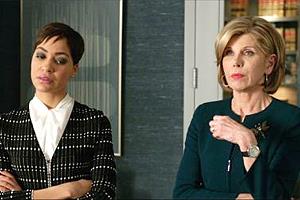Sometimes, an audacious new idea that sounds terrific at first doesn’t seem so terrific on deeper reflection. Just because something sounds good at the time doesn’t mean it’s good later on.
If, for example, you could choose a different ending to Breaking Bad — if Walt White went into remission, repaired his relationship with his wife and they all lived happily ever after — would you?
Don’t laugh. If Netflix has its way — yes, Netflix again — you may be in a position to decide how you your favorite show will end or, faced with a life-or-death decision, which way your favorite character will choose.
In your perfect, idealized version of The Walking Dead, for example, perhaps Negan leaves the baseball bat behind and makes Glenn his go-to guy and man-friend, instead of — spoiler warning! — that weirdo Eugene.
Yes, that may be an exaggeration, but if Netflix has its way, that may be an early look at the future of TV as we know it.
Hype springs eternal, where TV is concerned. Think how long it’s been, for example, since you first heard the words “interactive TV” and the promises that suggested.
Promise is one thing, practice quite another. In those early days, interactive TV amounted to little more than being able to shop from the couch using the remote.
The advent of tablets, high-speed internet access and instant messaging through social media has since ushered in an age of multi-screen viewing.
Today, you no longer have to rail at the screen while watching The Voice. You can tweet Blake Shelton directly yourself, in real time, to tell him how annoying he is and how, just once, it would be nice to see an R&B artist win The Voice for a change, instead of this constant parade of country artists.
If Netflix has its way — and only a fool would bet against them at this point — viewers will be handed control over how stories unfold. Because Netflix uploads entire seasons at a time, ready-made, it’s relatively easy to include interchangeable story threads and alternative endings, much like DVD directors’ cuts, where the director and producing studio failed to see eye-to-eye.

Broadcast TV, committed to showing episodes week by week, doesn’t have that luxury, of course. Some commercial networks are experimenting with their own, in-house streaming services — CBS’s All Access being the prime example, thanks to Good Wife spin-off The Good Fight— but so far the actual viewing options are limited, at least where differing storylines are concerned. All Access viewers can’t roll back the PVR, for example, to see how The Good Wife might have played out, say, had Alicia Florrick not left Lockhart/Gardner to start her own firm or — spoiler warning! — Will Gardner survived his courtroom shooting, the fifth-season shocker that caused Alicia to reexamine her life.
Netflix will do a trial run later this year with some of its children’s programming, in which established characters in some of its shows will be given interactive storylines.
Netflix executives are already talking about so-called “branch narratives” and different ways to connect plot points in some of its adult dramas.
Right now, the idea is in the planning stage, but few can doubt Netflix’s ability to shake up the way we traditionally watch TV.
This is, after all, a company that, in a relatively short period of time, has flipped the whole concept of TV-viewing upside down, in much the same way the smartphone trashed the MP3 player as the gadget-of-choice for those who prefer their entertainment on-the-go.
The irony, of course, is that traditional TV storytelling has rarely been better, thanks in no small part to the new golden age of television drama — the platinum age, as David Bianculli, founder of this parish, dubbed it in his new book, The Platinum Age of Television: From I Love Lucy to The Walking Dead, How TV Became Terrific.
The problem with choosing how we want a story to end is that the people already telling those stories — a show’s creators and its staff writers— are better at telling that story than we are.
In the same way early humans gathered around the fire to hear a storyteller tell a story, without everyone else chiming with their own competing versions, we rely on a Vince Gilligan or Peter Gould to tell us how Breaking Bad should end. And, if there is to be a spin-off called Better Call Saul, Vince Gilligan and Peter Gould are best poised to tell that story, too.
Being able to follow different stories down different roads of our own choosing sounds like a terrific idea in principle — think how Arrested Development was structured to do exactly that, thanks to its sprawling cast of characters — but in practice not every story idea is so malleable. Not every terrific idea is as terrific as it seems at first.
Questions abound. For example: If actors are required to film three or four different versions of their character’s journey, will they get paid three or four times as much?
Just askin.’